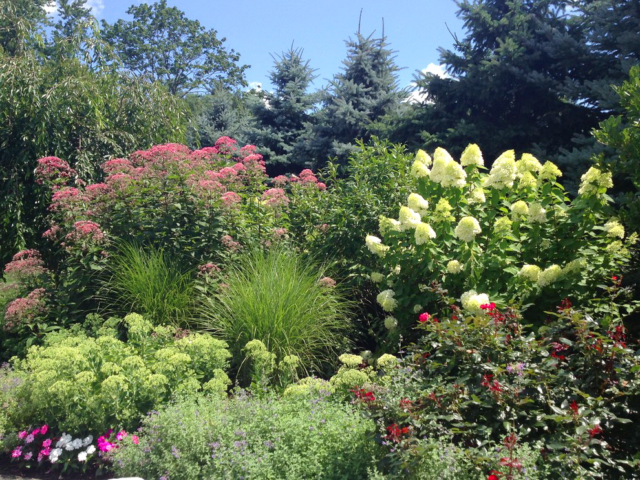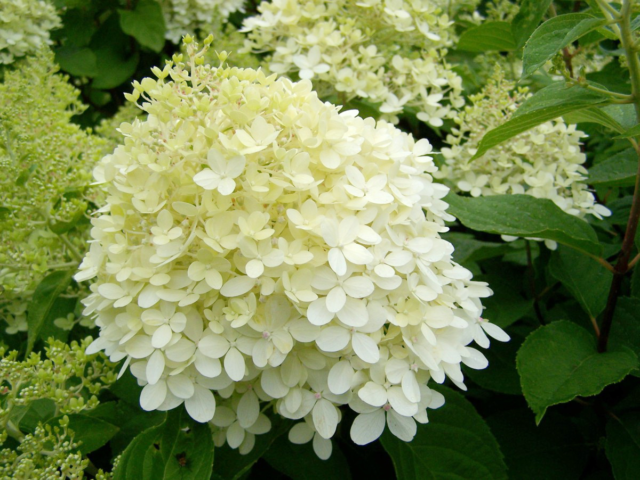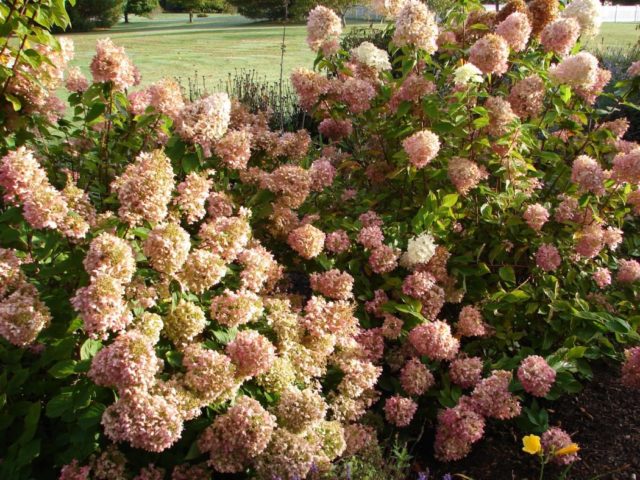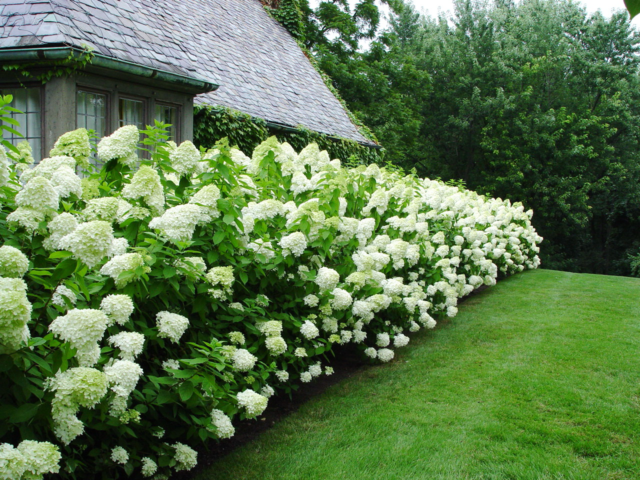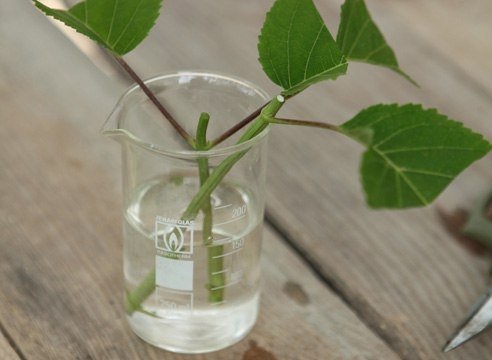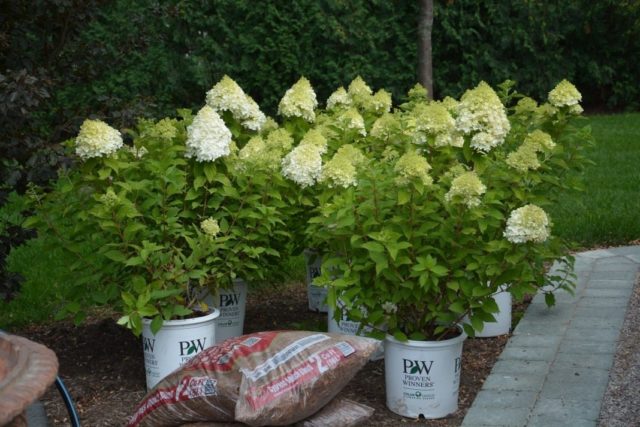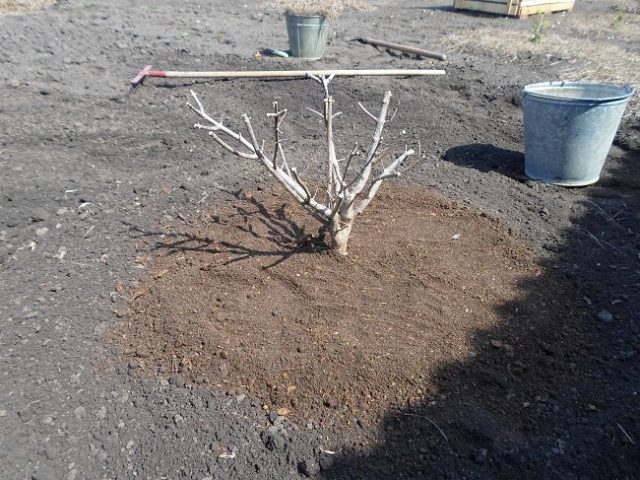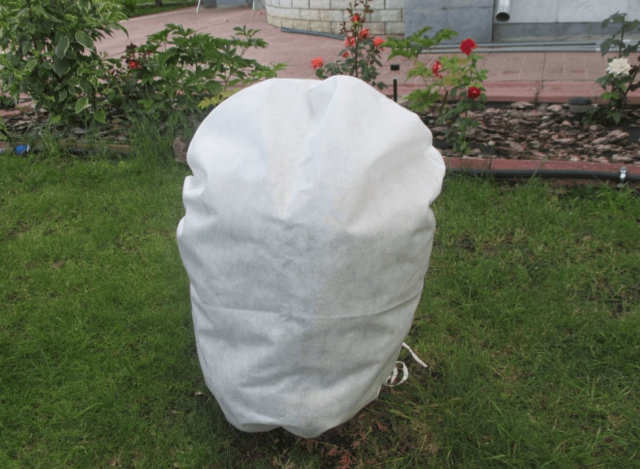Content
Hydrangea Limelight is a real live bouquet that blooms most of the summer and early autumn... Leaving is uncomplicated. Judging by the impressive landscape in the photo, Limelight panicle hydrangea is highly valued in landscape design due to its picturesqueness.
Breeding history
Arriving from Japan in the nineteenth century, panicle hydrangea, or hydrangia, as its name sounds in Latin, quickly took root in the gardens of Europe. In the last century, Dutch breeders bred a real treasure in the family of flowering shrubs - the Limelight hydrangea with strong shoots that confidently hold lush inflorescences. The variety was awarded with prizes at various flower exhibitions.
Description of hydrangea Limelight
The super-hardy and vigorous variety of hydrangea paniculata Limelight is impressive in size with the length of shoots up to 2-2.5 m. In diameter, an adult plant reaches the same indicators. Over the summer, the shoots grow up to 25-30 cm, forming a rounded dense crown. A feature of the Limelight hydrangea is its superficial root system, which can spread much wider than the crown circumference. Erect shoots of a brown shade, with a slight edge. They are strong and capable of holding the huge caps of the inflorescences of the Limelight panicle hydrangea, at a height of 2 m, without bending. Limelight panicle hydrangia bushes do not need props.
Medium-sized leaves are oval in shape with a pointed tip and a finely toothed border. Dark green leaf blades serve as a contrasting background for the original greenish-white inflorescences of Limelight paniculata hydrangea. By autumn, the leaves acquire a less saturated shade, then turn yellow.
The inflorescences of Limelight paniculata hydrangia also change color, which bloom soft green in July and retain their decorative effect until October. They are wide pyramidal in shape, up to 30 cm, dense, and consist of many sterile flowers. If the bush grows more in the shade, its panicles will be greenish until September. In the sun, the flowers of the paniculata variety Limelight are white, but from mid-August they acquire a pink tint. At the same time, it remains fresh and beautiful in appearance without a hint of wilting, as can be seen in the autumn photo of Limelight hydrangea.
But the panicle variety Limelight blooms profusely in bright sun, if its superficial roots are mulched and do not dry out.
Paniculata hydrangea is grown in the south and in the regions of the middle zone of the country. Hostas and shade-loving ground covers are planted in the near-trunk circle of an adult plant: saxifrage, sedum. In the northern regions, Limelight is grown in greenhouses.
Frost resistance, drought resistance
Panicle hydrangea can withstand temperatures down to -29 ° C. We must take care of a cozy place protected from the north wind and drafts. Then the plant will not be afraid of autumn temperature drops, and flowering will continue until October. Young bushes of the Limelight variety suffer from frost, they must be covered. As well as adults, if the winters are snowless.
Hydrangea Limelight is hygrophilous, which is reflected in its Latin name, derived from the Greek language (hydor - water). Water regularly. In the southern regions, if plant in the sun, the soil is mulched with a thick layer of grass. So the roots, which are located very close to the surface, protect from drying out until the next watering. In drought conditions, Limelight panicle hydrangea plants lose their splendor. Flowers become small.
Disease and pest resistance
The Limelight variety is not susceptible to diseases; with proper agricultural technology, it is little affected by pests. Very young plants can be threatened by slugs. If there are many gastropods, they eat up the leaves, and the hydrangea may die. Before planting exotic Limelight, the site is carefully cleaned so that the slugs have nowhere to hide. In greenhouses, the plant can be attacked by ticks and aphids, against which pesticides are used.
Hydrangea breeding methods
Cuttings are the most convenient way to propagate hydrangia paniculata Limelight. Cuttings select lignified during spring pruning or green in summer:
- you need to take fragments where 2 nodes are visible;
- cut obliquely from below, directly under the kidney;
- from above, the branch can be cut straight, stepping back a few centimeters from the bud;
- the rooting substrate is prepared in equal parts of sand and peat;
- cuttings are placed in a mini-greenhouse, treated with root stimulants;
- when planting, the lower kidney is deepened;
- watered with warm water.
Cuttings of panicle hydrangea take root after 30-40 days. Plants bloom in 2-3 years of development.
Planting and caring for hydrangea Limelight
Choose the right time and place for the Limelight paniculata.
Recommended timing
The best time to plant hydrangeas is spring, the last decade of April or the first of May. Seedlings in containers are transferred to the site and later. In the south, they are planted in September.
Choosing the right place
According to the description, Limelight hydrangea is a shade-tolerant, but also light-loving shrub. Will grow well and bloom magnificently in an open area. The main requirement is protection from the north wind. For a panicle variety, a substrate with low acidity is selected, within the pH range of 4-5.5. It is prepared in advance and laid in a pit, since such a soil content is far from being in all areas.
It is better for the plant to be constantly in one place.
Selection and preparation of planting material
Limelight panicle seedling is purchased in horticultural centers in containers. Make sure that they are swollen, and the kidneys and trunk are not damaged. If there are already leaves, their plates should be unaffected by pests. Before planting, the pot with the seedling is placed in a large container of water in order to easily remove the clod of earth without damaging the delicate roots of the panicle hydrangea.
Planting panicle hydrangea Limelight
For the Limelight variety, a pit with a diameter of 50 and a depth of 35 cm is laid:
- below - the drainage layer;
- a substrate of humus, peat, garden soil and mixtures for conifers;
- the Limelight seedling is placed so that the root collar is at ground level;
- the near-trunk circle is slightly compacted, watered and mulched on alkaline soils with peat, sawdust from conifers or needles.
Hydrangea follow-up care
There are not many works with the Limelight bush.
Watering
The soil must be moist. The soil under the panicle hydrangea is not overdried. Sprinkling is applied in the evening.
Top dressing
Limelight variety is fertilized with special complex preparations: Green World, Pokon, Fertica, Valagro, diluted according to the instructions. They feed three times per season.
Mulching and loosening the soil
Around the trunk, the soil is loosened after watering. During a drought, lay out mulch from grass, bark or perlite. Be sure to mulch the Limelight hydrangea growing in an open space.
Pruning
The inflorescences of the variety are created on new shoots, so pruning is necessary for abundant flowering, this is what attracts Limelight hydrangea in the garden design.In the fall, wilted flowers are removed, and in early spring, the shoots are shortened by 2/3forming a bush.
Preparing for winter
Limelight is well watered in October. Then a wide near-trunk circle is mulched with peat and humus, and later they are spud. Broken branches are removed if they are preparing a shelter for the winter.
Shrub shelter for the winter
In areas of the middle climatic zone, Limelight hydrangea is covered with a dense spunbond or burlap. After that, snow is thrown to the bush.
Diseases and pests, methods of control and prevention
Limelight hydrangea is disease resistant. Sometimes the leaves turn yellow due to chlorosis that develops in alkaline soil. The trunk circle is acidified with iron vitriol, citric acid, mulched with needles. To protect the plant from leaf spot and powdery mildew, they carry out prophylaxis with fungicides Horus, Maxim, Skor.
Spider mites are fought with acaricides. Against aphids and bedbugs, which also suck juice from the leaves, they are sprayed with Fitoverm or insecticides Match, Engio, Aktar.
Hydrangea Limelight in landscape design
Limelight panicle hydrangea is beautiful in landscape design in different versions:
- near the entrance;
- as a soloist on the lawn;
- hedges for dividing garden areas;
- shrub mixborder element;
- a bright accent among conifers.
A popular version of Limelight hydrangea on a trunk in the form of a spectacular tree.
Conclusion
Hydrangea Limelight will give your garden a charming twist. There is little trouble with her. The organization of drip irrigation, through which feedings are supplied, will facilitate the care of a magnificent exotic.
Testimonials
